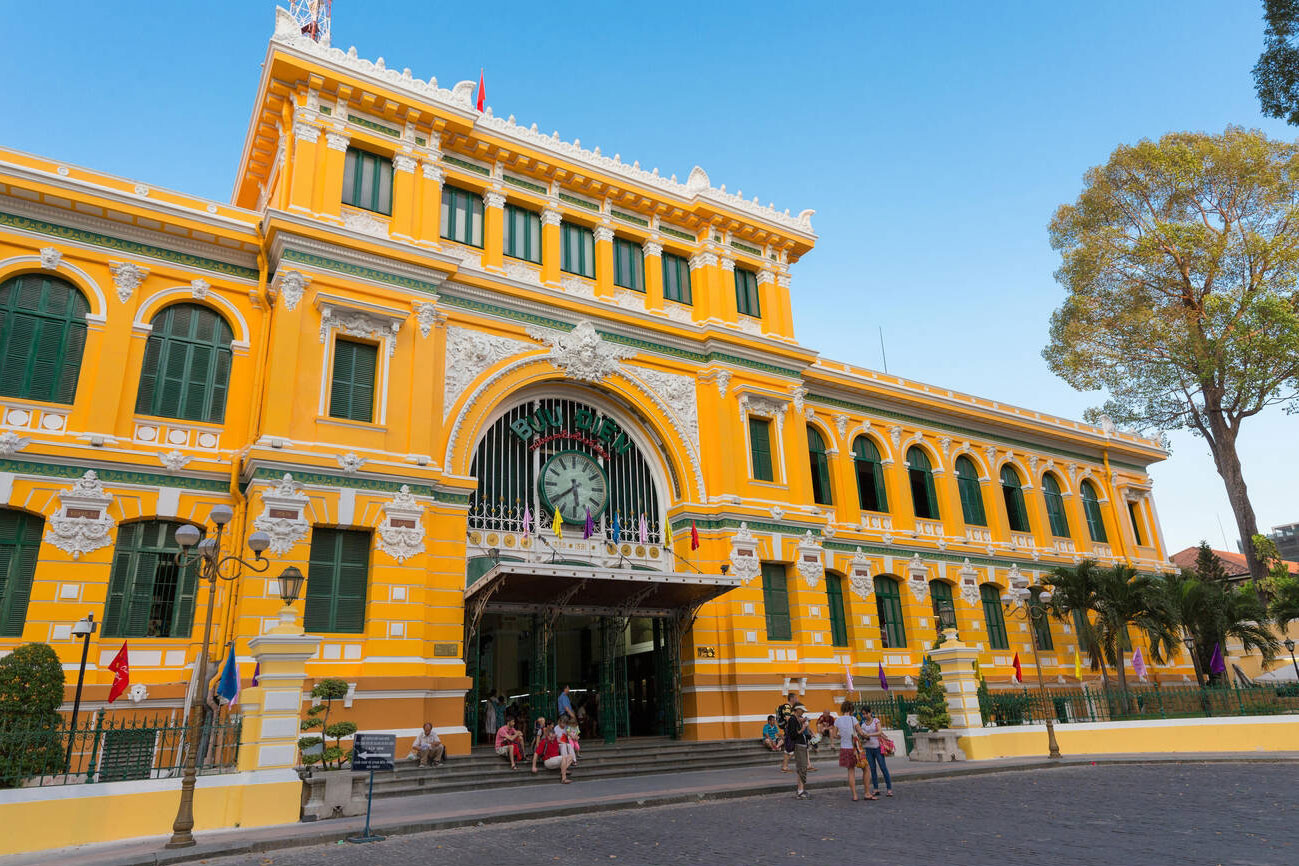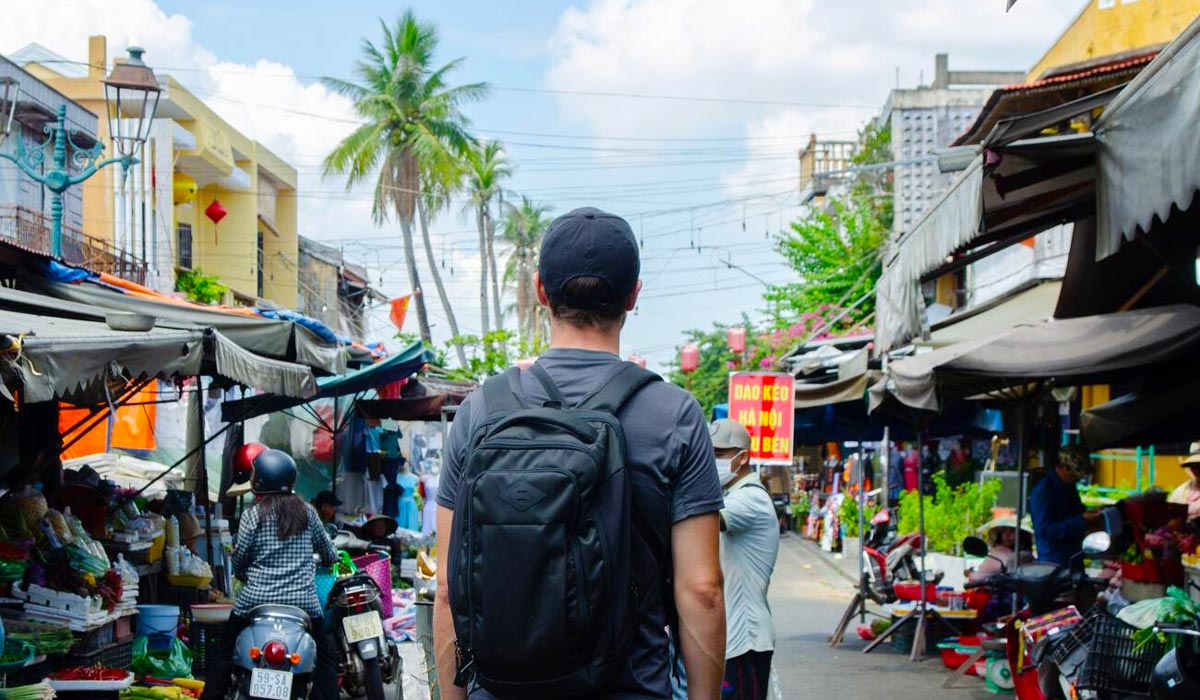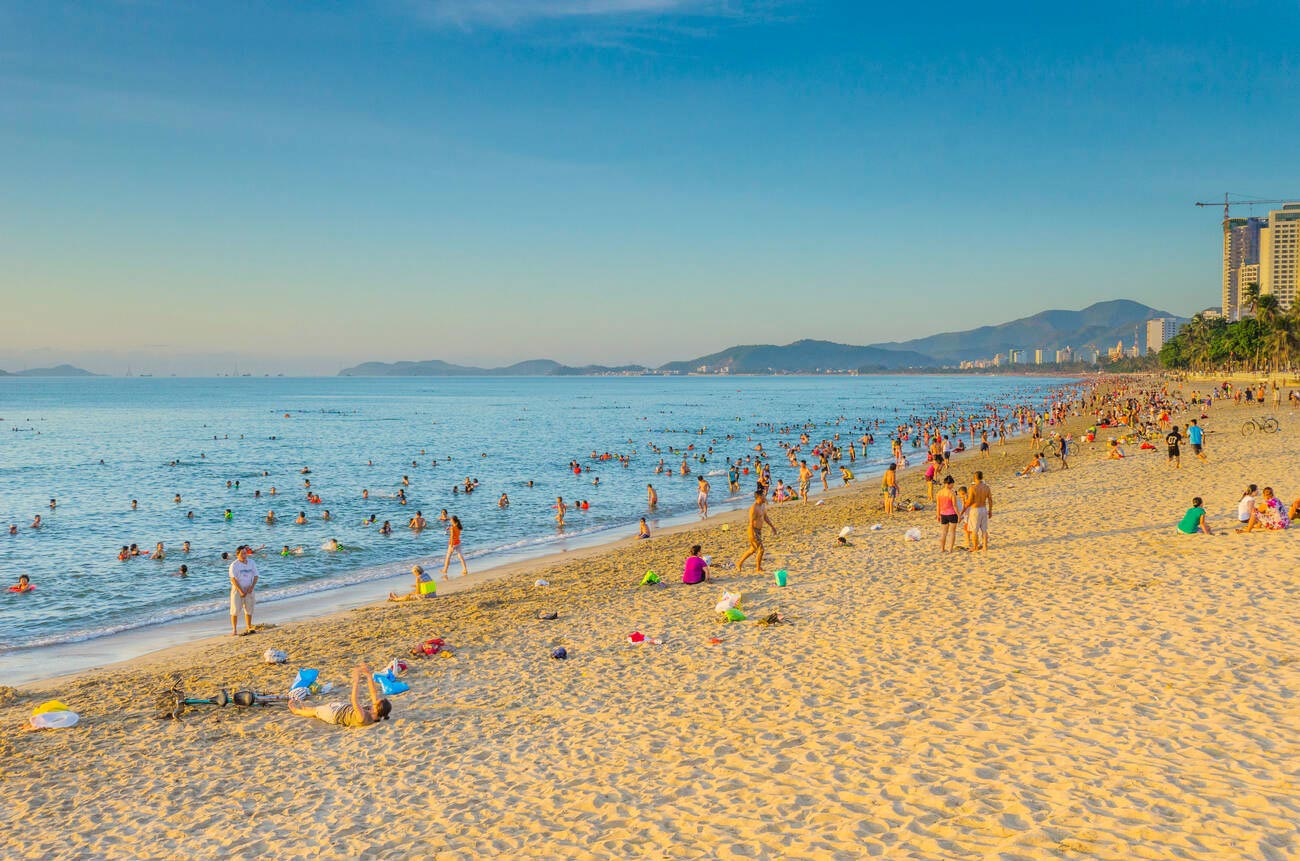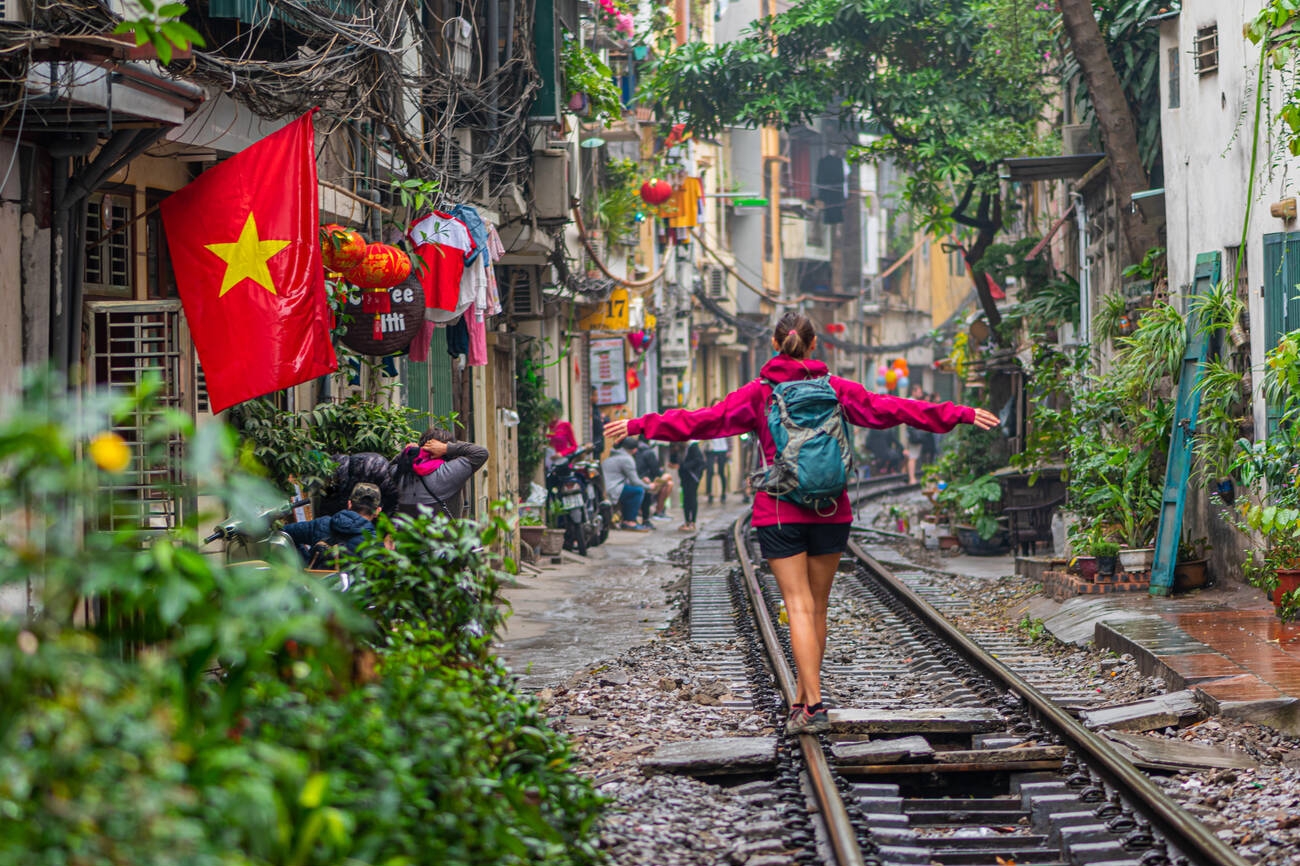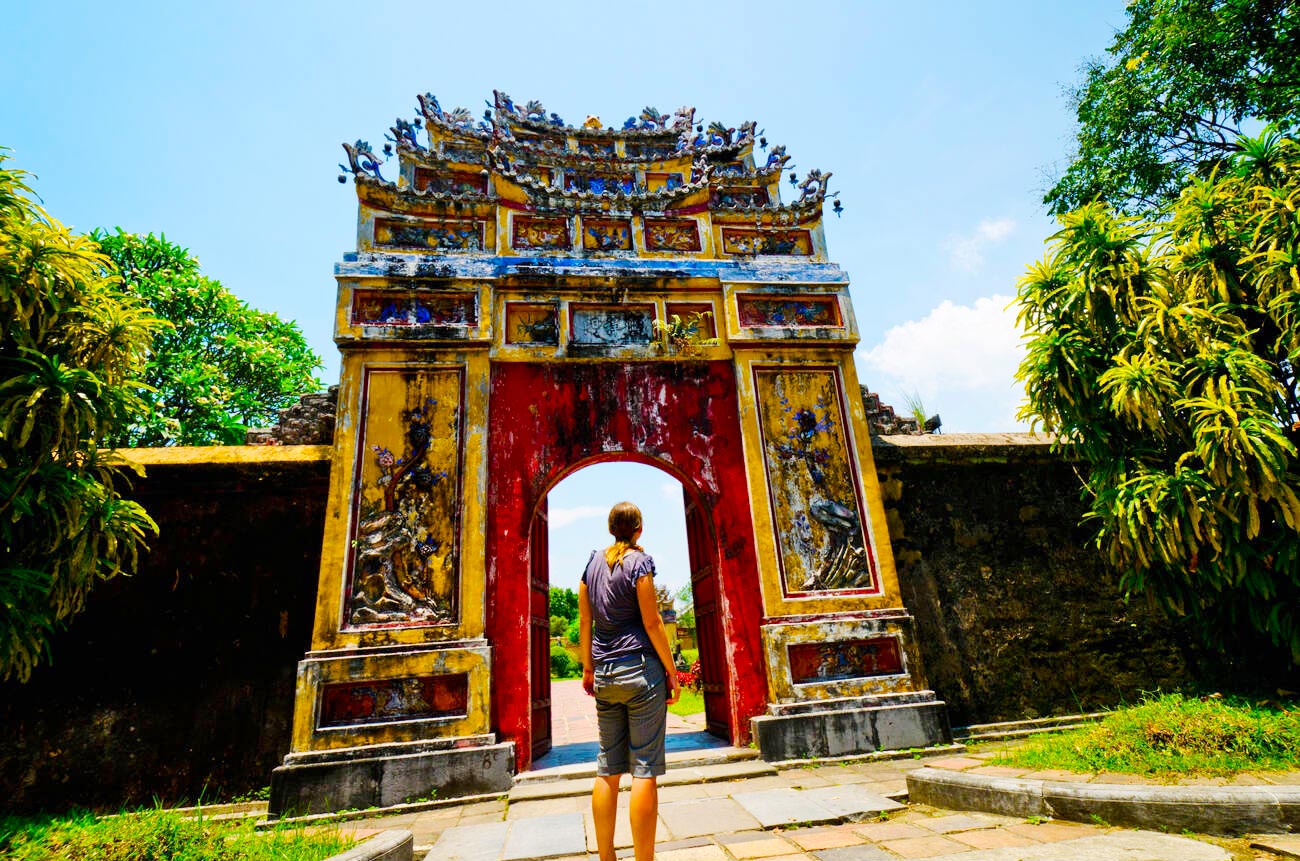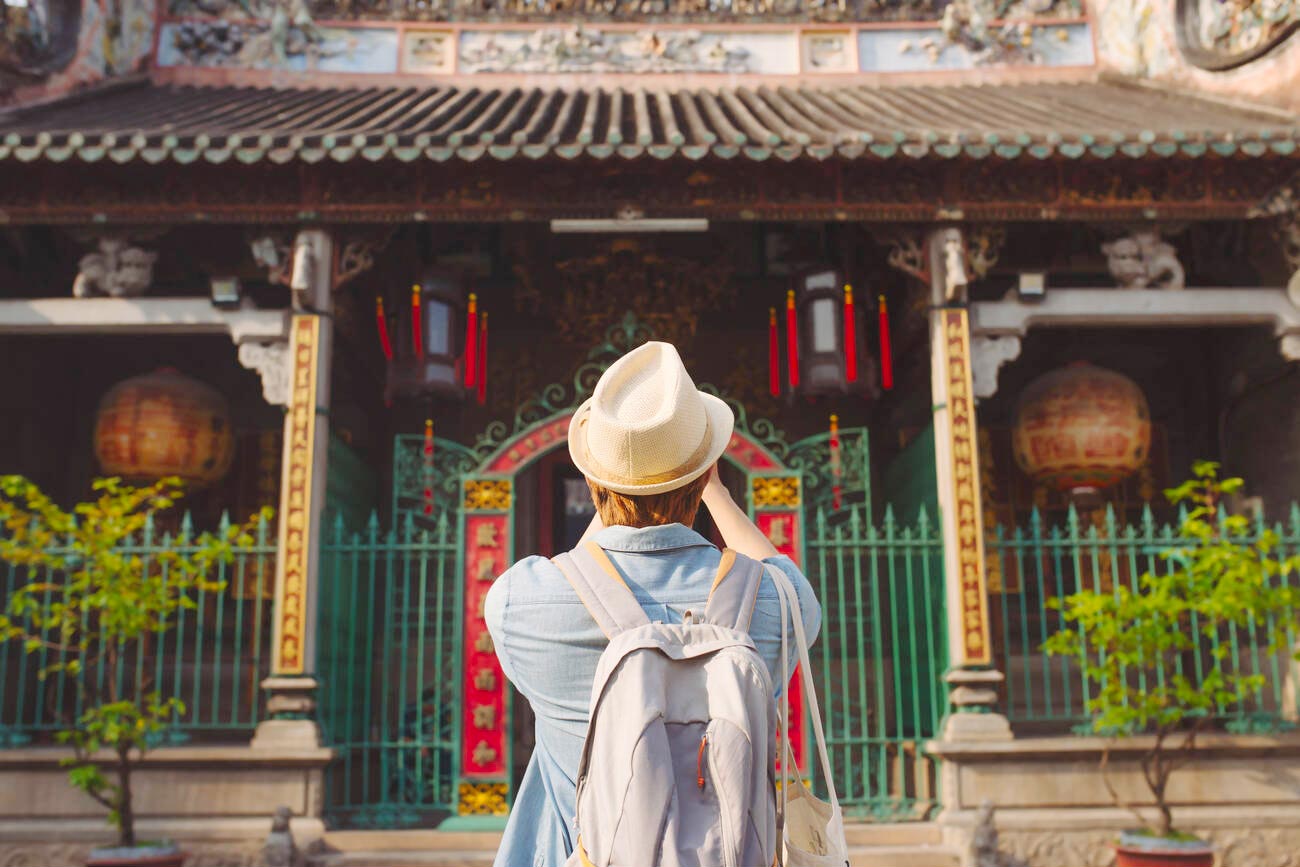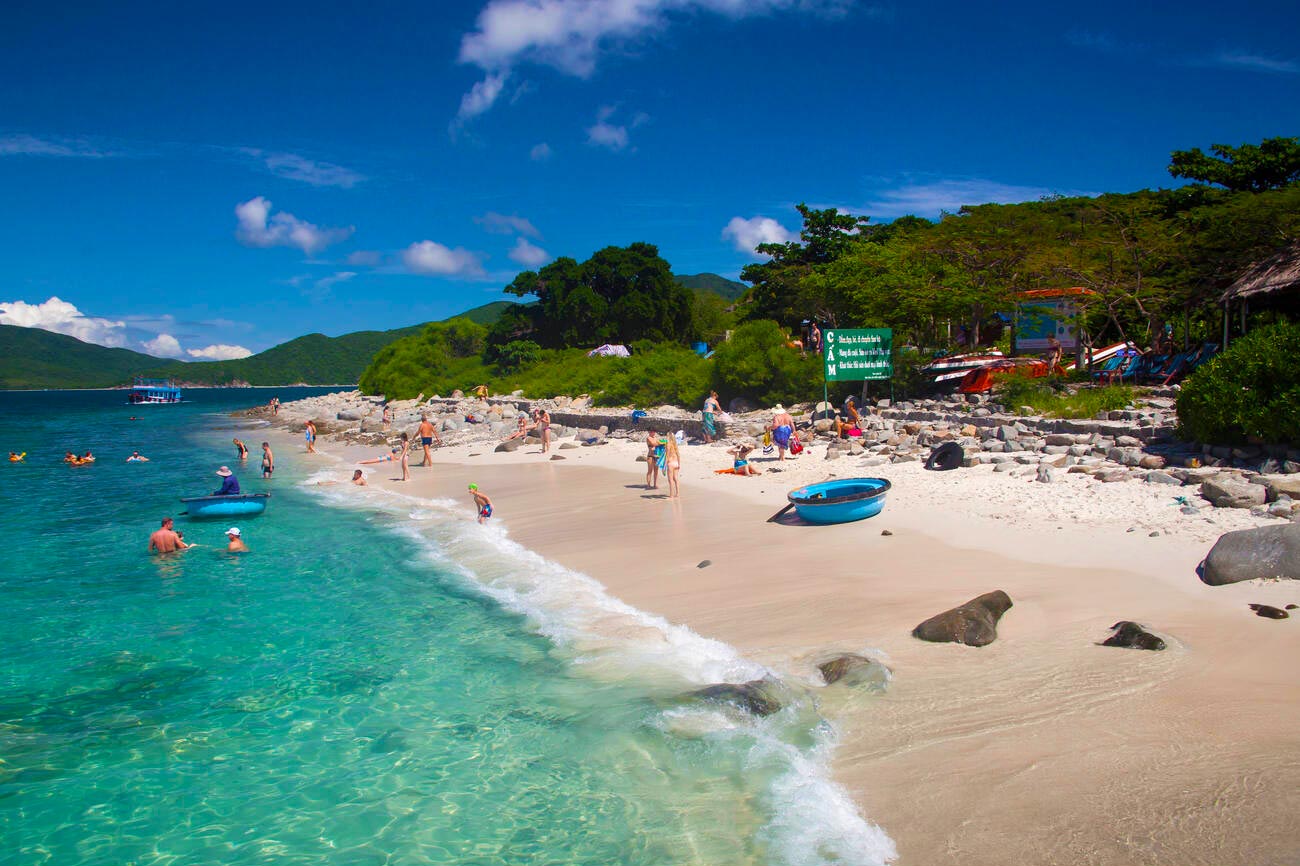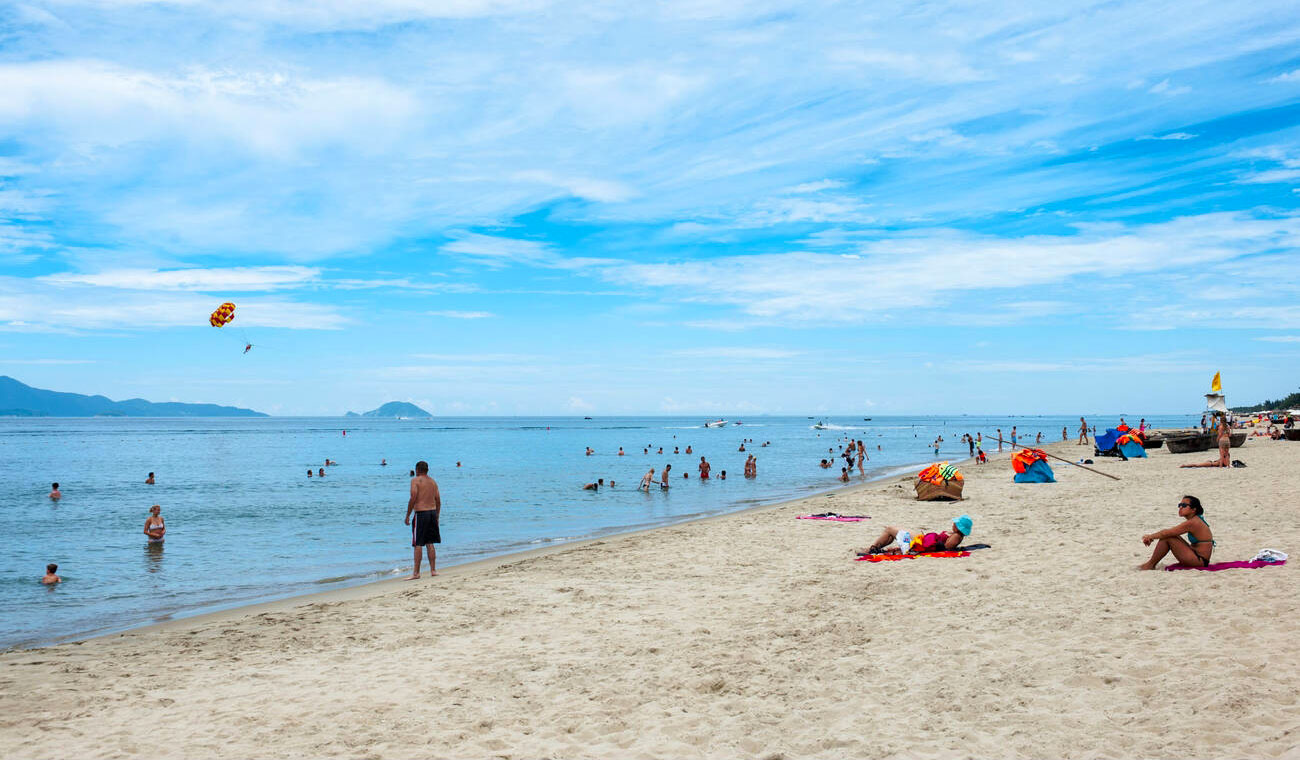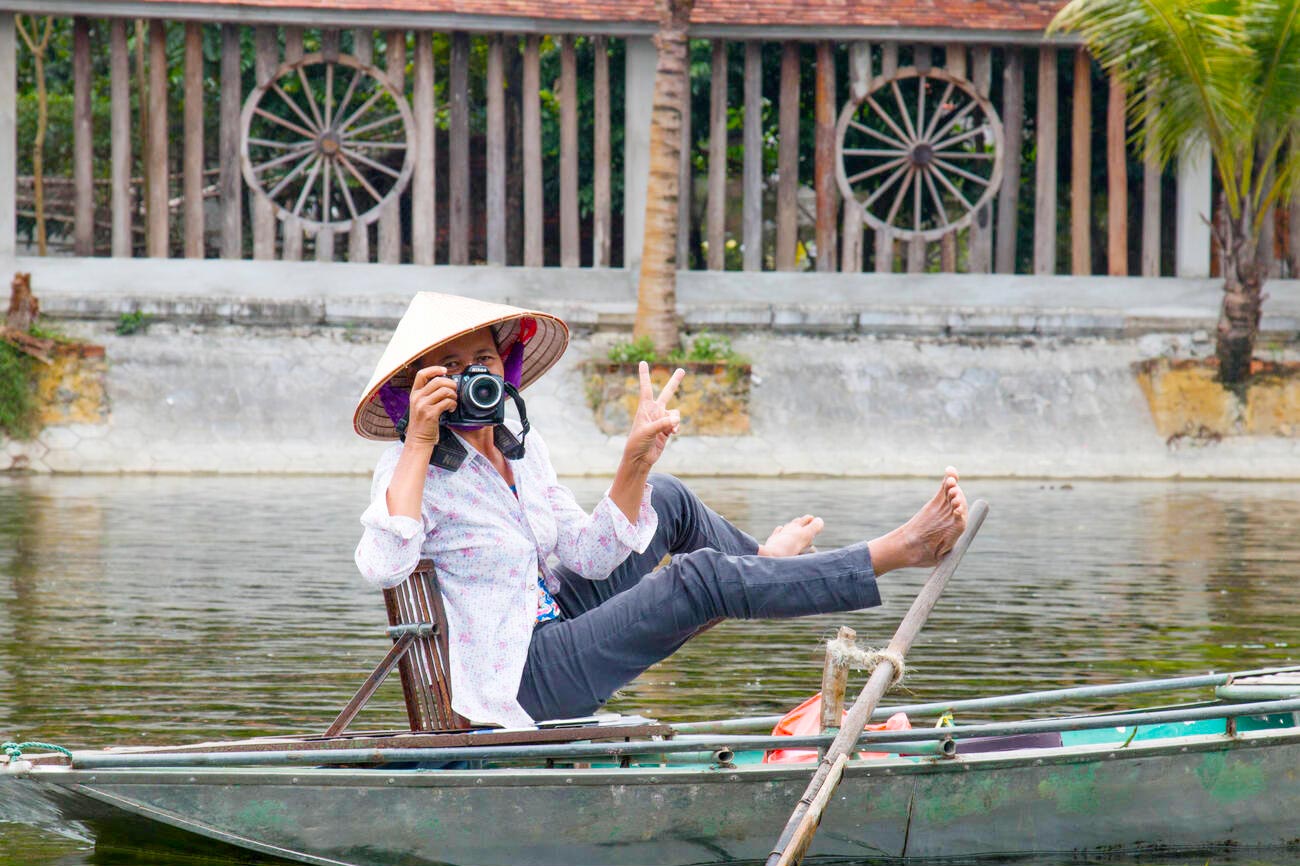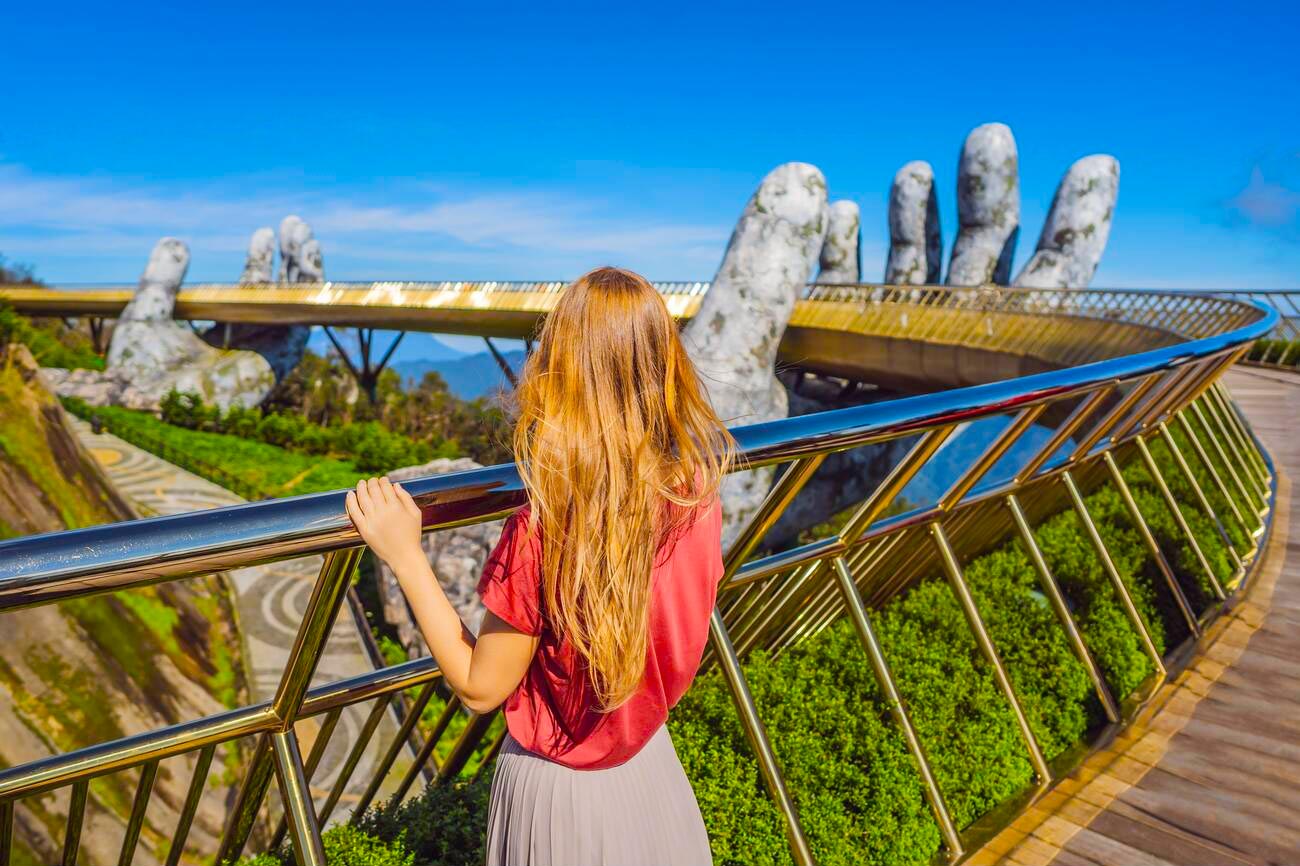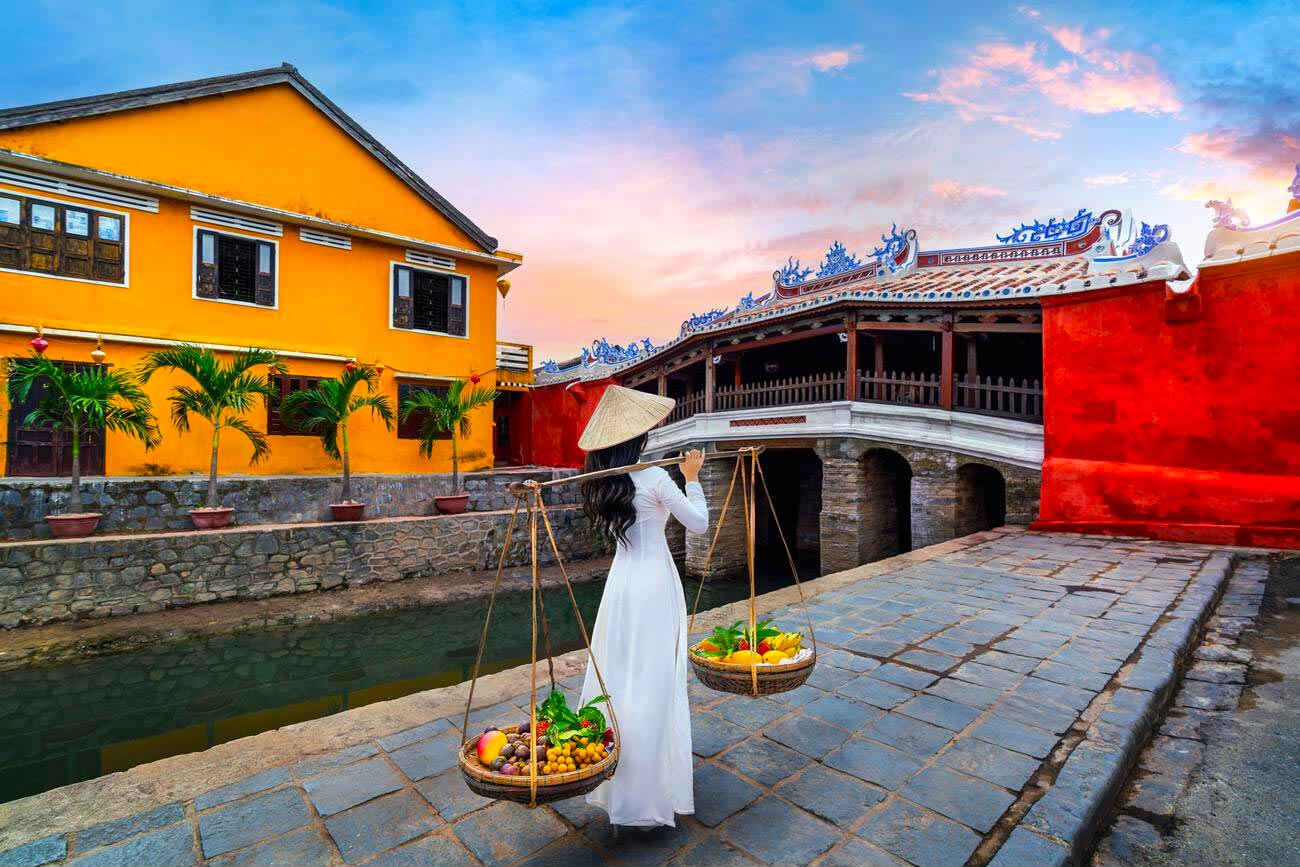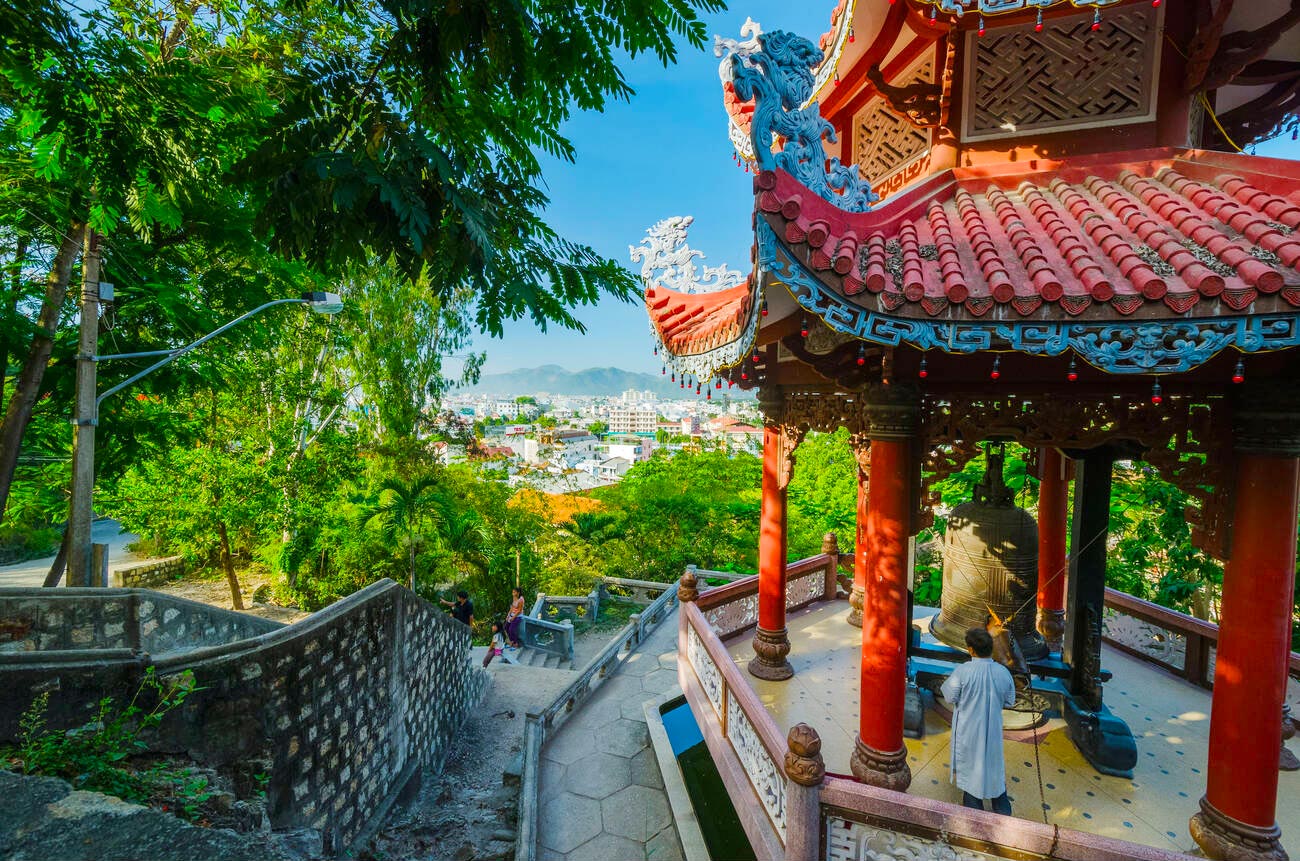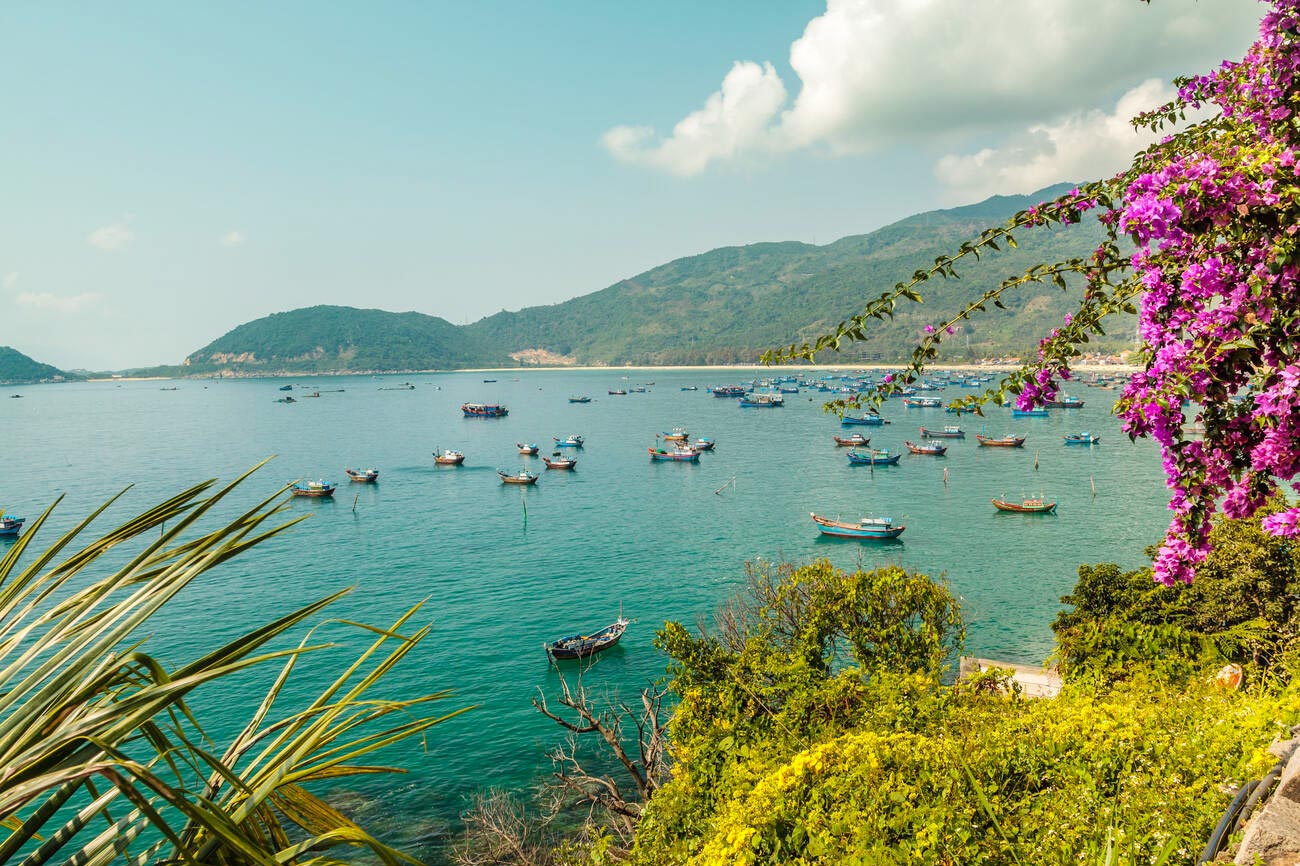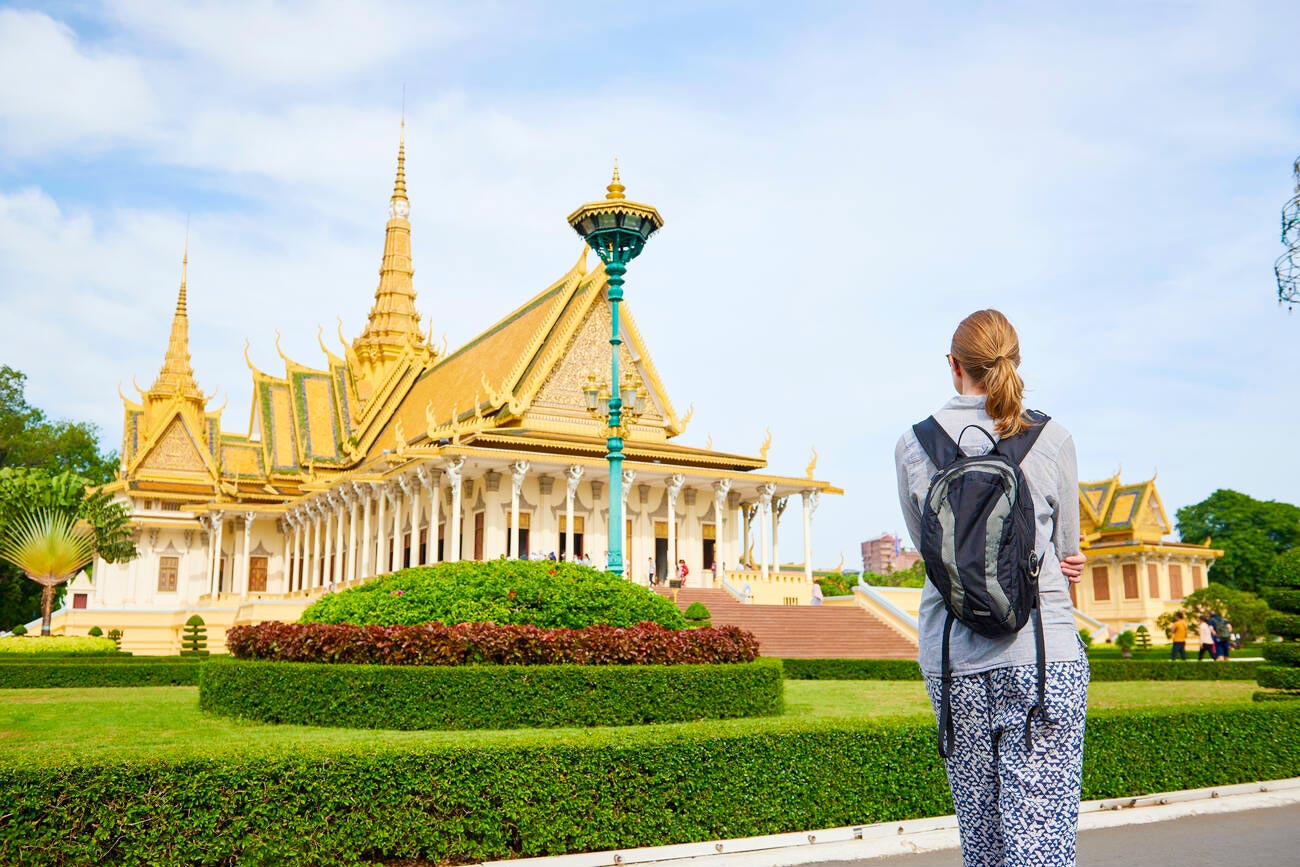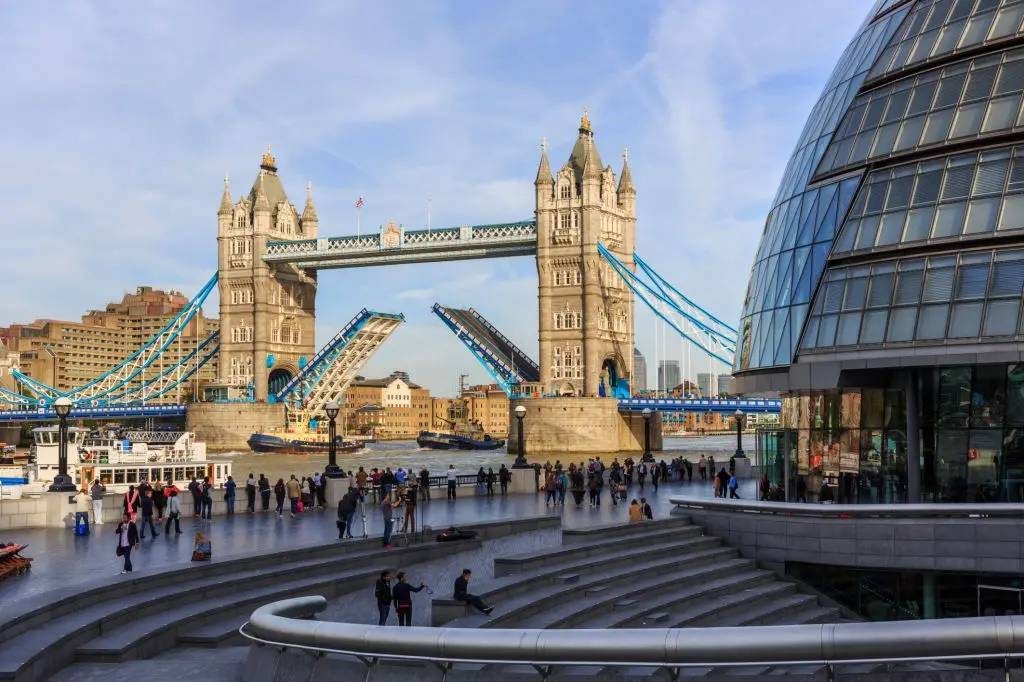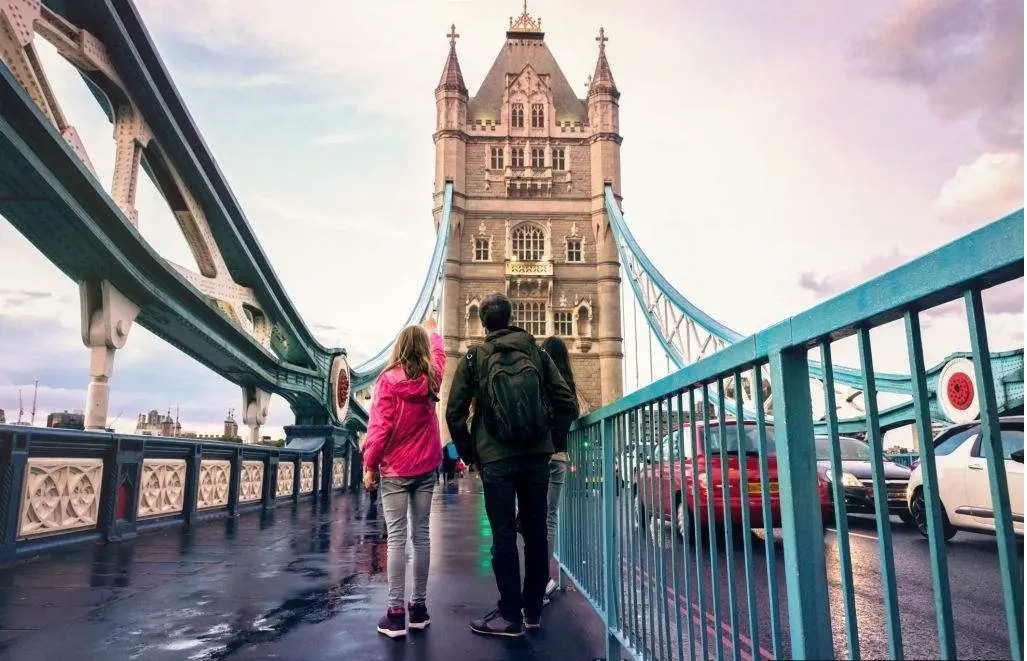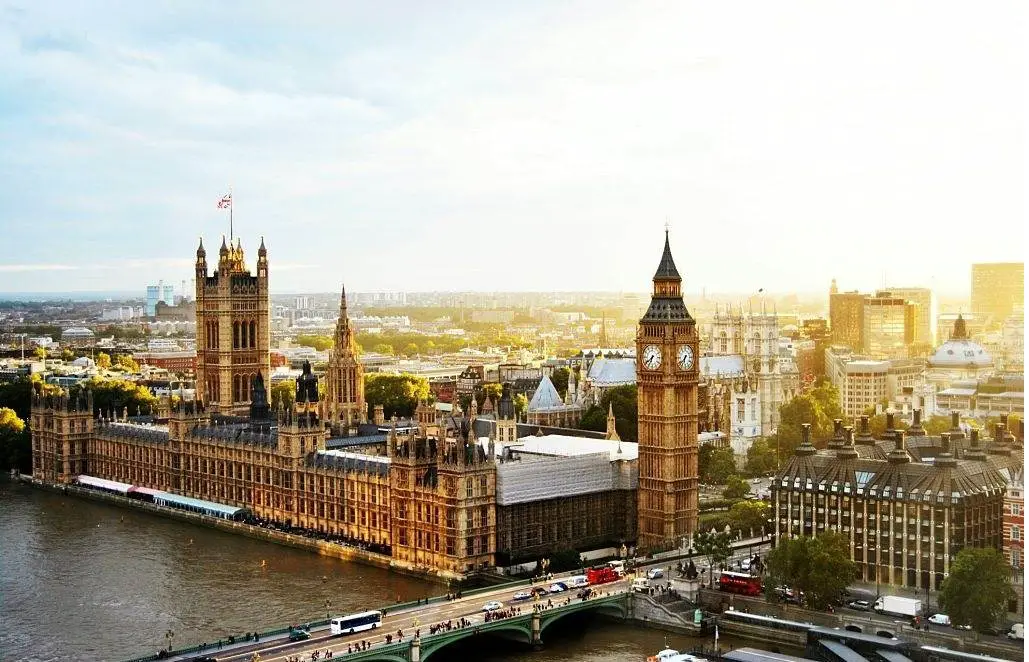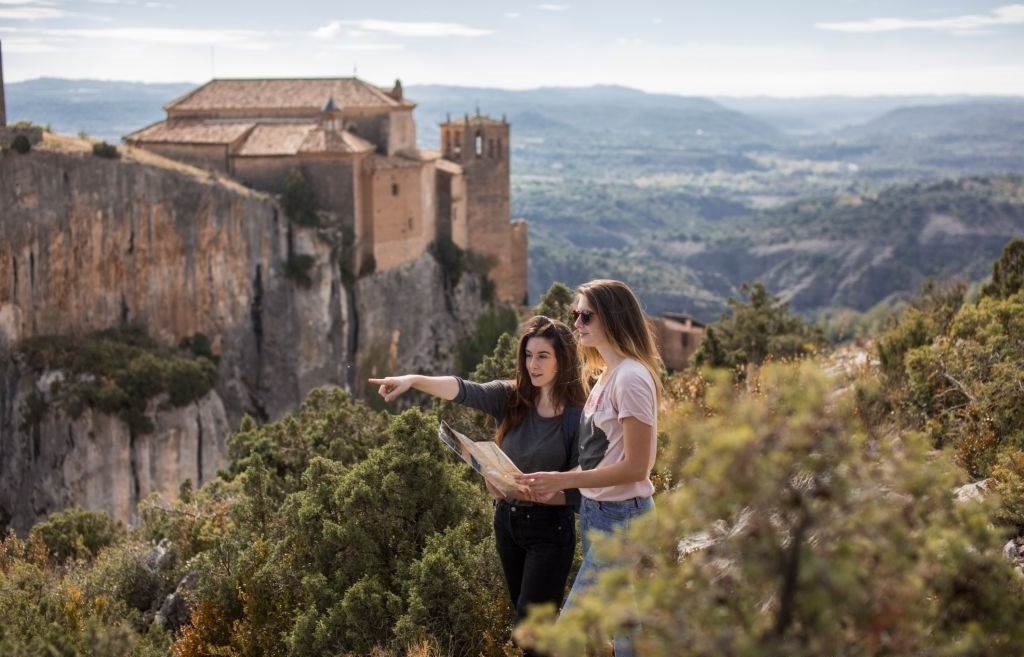Summary
- The post office’s architectural grandeur blends French colonial design and local heritage, making it a must-see site.
- Daily postal operations coexist with historic charm, showcasing Vietnam’s evolution and resilience over centuries.
- Hiring guides helps reveal hidden nuances, from ornamental motifs to localized historical facts and anecdotes.
- Nearby attractions like Notre-Dame Cathedral further enrich the cultural tapestry within walking distance.
- Thoughtful planning ensures a fulfilling visit, whether you’re photographing details or sending a postcard abroad.
The French-style Post Office is one of Vietnam’s most captivating architectural gems, embodying a harmonious blend of European design and Vietnamese heritage. Located in Ho Chi Minh City (formerly Saigon), this post office has become a beloved attraction for travelers seeking history and cultural immersion. Stepping inside transports you to a bygone era when Vietnam was shaped by French colonial influences that remain evident in grand public buildings, wide boulevards, and ornamental façades throughout the city. In this article, you will find a comprehensive guide on everything you need to know to plan a trip to this iconic structure—from understanding its historical significance and architectural splendor to insider tips for getting the best photographs and discovering other nearby attractions.
With so much to see and learn, visiting the French-style Post Office can be more than just a quick stop on a sightseeing tour. It can become a journey through Vietnam’s multifaceted past, enriched by the vibrant daily life around you. Whether you are a history buff, an architecture enthusiast, or just someone looking for a unique cultural experience, this guide will help you appreciate why locals and international travelers cherish this post office. So, let’s delve into the story and the magic behind this heritage site.
French-style Post Office Overview
The French colonization of Vietnam profoundly influenced the country’s cultural and architectural landscapes. Buildings such as the Saigon Central Post Office, known informally today as the French-style Post Office, were conceived to serve functional public needs while reflecting European design ideals of the late 19th and early 20th centuries. When you first approach the post office, you’ll notice the imposing façade, meticulously adorned with Romanesque features, large arched windows, and intricate green shutters that contrast the pale-yellow exterior. It is truly a striking sight and makes for a perfect introduction to the architectural tapestry of Ho Chi Minh City’s District 1.
Designed by the influential Gustave Eiffel—famed for the Eiffel Tower in Paris and the Statue of Liberty’s structural framework—this building is a prime example of marrying functionality with aesthetic elegance. Its soaring ceilings and vast interior were ingeniously created to maximize natural light and ventilation in a tropical climate. Many travelers remark on the interplay of airy spaciousness and old-world detail on full display the moment they step through the double wooden doors.
Although heavily influenced by French architectural elements, the post office embodies Vietnamese touches that speak to the nation’s resilient identity under colonial rule. For instance, large wall maps from the early 20th century show Saigon’s street layout and the broader Indochina region, serving as historical records and decorative elements. These wall maps, installed on either side of the building’s interior, elicit fascination from visitors who can peer back in time, glimpsing a city and region in flux due to political and economic changes.
The fusion of Gothic, Renaissance, and French colonial styles makes this post office stand out among other public buildings in the city. Its presence is a testament to Vietnam’s layered history, where each architectural curve, color palette, and ornament speaks volumes about multiple cultural influences. It has been meticulously preserved throughout its existence and continues to function as a working post office, allowing you to immerse yourself in a living piece of history.
Delving into French-style Post Office Magnificent History
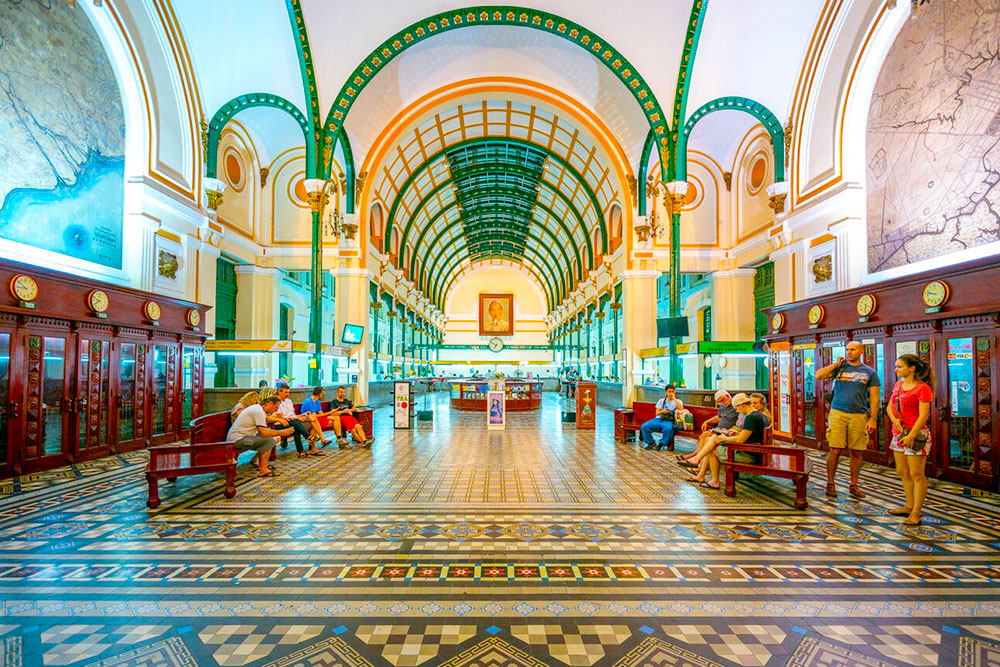
To fully appreciate the French-style Post Office, it is helpful to step back to the late 19th century when France sought to reinforce its colonial power in Indochina. As a strategic port city, Saigon was considered the “Pearl of the Far East.” With a rapidly growing population and expanding commerce, city planners sought to modernize infrastructure, including public utilities such as postal services.
In 1886, construction commenced on what was envisioned as a grand central post office to serve as a mail distribution center and a prominent symbol of French sophistication and authority. By 1891, the building was completed mainly, showcasing elaborate façade designs, cast-iron details, and an interior reminiscent of European railway stations of the era. Despite war and political upheaval, the post office endured, adapted, and maintained its operational functions.
The French-style Post Office served as a key communication hub throughout the turbulent 20th century, including both World War II and the Vietnam War. Letters to and from loved ones, important government documents, and strategic military transmissions all passed through this building. As conflicts ended and Vietnam moved toward reunification, the post office seamlessly transitioned from a colonial establishment to an integral part of the modern Vietnamese postal service.
Over time, the building has been restored and refurbished to keep pace with contemporary needs while preserving its historical charm. Today, modern telecommunication counters operate alongside traditional writing desks and vintage phone booths. Even if you come to send postcards home, you’ll find yourself gazing at the arching wrought-iron ceiling and imagining the countless stories that have passed through this venerable location.
While some historical colonial structures in Vietnam have either been repurposed or lost to modernization, the French-style Post Office has remained steadfast in its original function. Its resilience has helped secure a special place in Vietnamese public consciousness. Indeed, locals often direct visitors to the post office as a must-see attraction that connects the city’s storied past with its vibrant present.
For many, the building symbolizes a cultural crossroads, testifying to how Vietnam has absorbed external influences while forging a path to independence and modernization. The combination of 19th-century Parisian flair and Southeast Asian practicalities is quite evident. Visitors can marvel at antique fixtures and ornate details in the same space that local residents use daily to handle routine mail, bills, and packages—an everyday reminder of how the old continues to blend with the new in a city perpetually on the move.
Practical Visiting Tips for French-style Post Office
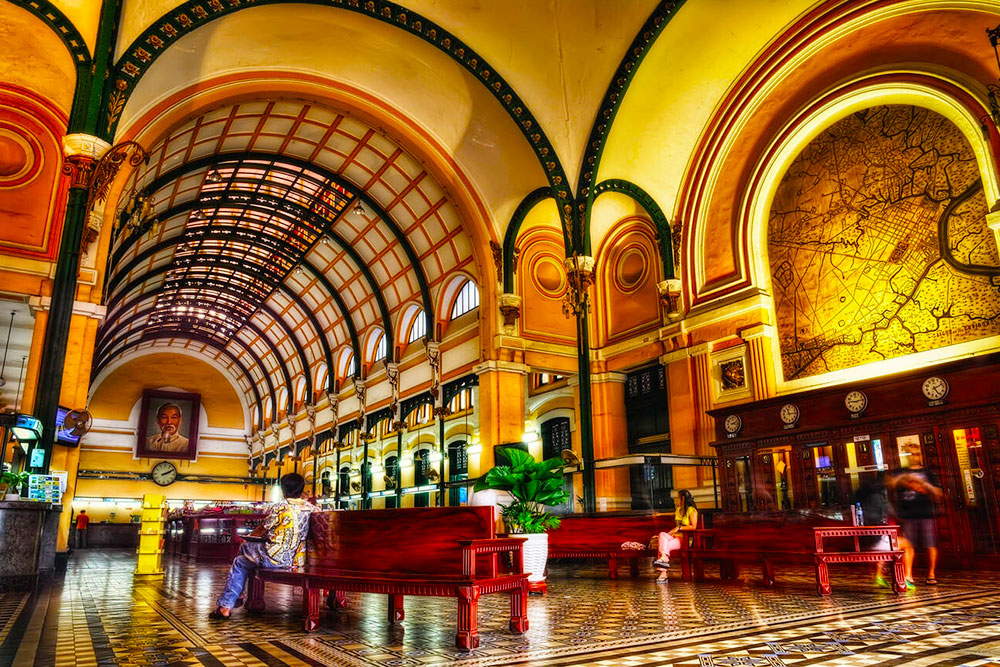
Navigating Your Way to the Post Office
One of the most convenient ways to visit the French-style Post Office is by heading to District 1, which is located near other major landmarks such as Notre-Dame Cathedral Basilica of Saigon, the Reunification Palace, and the Saigon Opera House. If you’re staying in any of the hotels around District 1, you can often reach the post office on foot. Public buses, taxis, and ride-hailing apps (like Grab) are readily available and affordable for those farther away. Because Ho Chi Minh City is bustling, especially during peak hours, planning your travel time will help you avoid congestion and ensure a more relaxed visit.
Once you arrive, you’ll see the contrasting façade of Notre-Dame Cathedral a short distance across the street. If you’re unsure where the post office entrance is located, look for the large arched doorway flanked by columns and a small queue of tourists snapping photos—an ever-present scene. The official address is 2 Công xã Paris, Bến Nghé Ward, District 1, Ho Chi Minh City.
Best Times to Visit
The post office is open daily, generally from early morning until late afternoon or early evening (exact hours can vary slightly depending on season and local regulations). To capture the most tranquil experience, arrive in the morning just after it opens or later in the afternoon when tourist crowds begin to thin. Around midday, large tour groups often arrive, making the interior quite busy and potentially challenging for photographing the surroundings.
Another tip is to avoid visiting during major local or international holidays when the city center can become particularly crowded. However, enjoy the buzz of city life. A midday visit can offer prime opportunities for people-watching as locals line up at the counters to manage postal tasks, purchase stamps, or send off important documents. Just be prepared to navigate through throngs of travelers armed with cameras.
Dress Code and Etiquette
While there is no strict dress code, it’s respectful to dress modestly and comfortably, especially given that this is still a functional government building. Air conditioning isn’t the building’s strongest feature, and with Ho Chi Minh City’s tropical climate, lightweight and breathable fabrics are your best bet. Remember that you might also want to visit the nearby Notre Dame Cathedral, which may require more conservative attire (e.g., shoulders and knees covered).
Because the post office remains a place of work, it is courteous to avoid blocking service counters when taking photographs. If you need help with postal services, local staff can typically speak basic English, but patience and a friendly demeanor go a long way in bridging any language gaps. Remember to keep your voice at a moderate level out of respect for those conducting day-to-day postal activities.
Photography and Souvenirs
The building’s ornate interior and exterior make it a photographer’s paradise. Whether you use a high-end DSLR or just your smartphone, you’ll find plenty of angles and corners worth capturing. The main hall, with its beautiful arched ceiling and large portrait of Ho Chi Minh at the far end, is the most popular photo spot. Also, look for unique vantage points from the front porch, which can frame the building’s façade and the passing crowds outside.
Inside, you will come across souvenir shops offering everything from vintage postcards to handcrafted trinkets that celebrate Vietnamese culture. For a truly unique memento, purchase a postcard and use the in-house mail service to return it home. You’ll have a keepsake from one of Vietnam’s most famous landmarks but also the novelty of it being stamped and mailed from the very place you’re visiting.
Engaging with Local Guides
For a deeper understanding of the site’s historical significance, consider hiring a local guide or joining a half-day city tour that includes the French-style Post Office as a highlight. Guides can highlight architectural nuances you might otherwise miss, such as the hidden references in the wall maps or the meaning behind specific decorative motifs. They can also weave in personal anecdotes or lesser-known stories about the building’s past. This additional layer of context can turn a short drop-in into a meaningful cultural exploration.
Exploring Beyond the Post Office
Notre-Dame Cathedral Basilica of Saigon
Directly across the street from the post office is the Notre-Dame Cathedral Basilica of Saigon, another icon of French colonial architecture. Constructed between 1863 and 1880, the cathedral’s red bricks were imported from Toulouse in France. The twin bell towers, standing nearly 60 meters high, are visible from various vantage points in the city center. Like the post office, the cathedral still functions in its intended capacity, hosting regular Mass and religious services. If your schedule permits, stepping inside reveals Gothic-inspired interiors and stained-glass windows that bathe the space in soft hues.
Saigon Opera House and Reunification Palace
A short walk or taxi ride from the French-style Post Office leads you to the Saigon Opera House (Municipal Theatre). Dating back to 1898, this building exemplifies flamboyant French architectural influence, complete with ornate carvings, statues, and wrought-iron balconies. If you are a fan of the performing arts, consider booking a ticket for a traditional Vietnamese musical or a contemporary dance show, often staged in this historic venue.
Another landmark in Vietnam’s modern history is the Reunification Palace (once known as the Independence Palace). This mid-20th-century building carries a distinctly different architectural style—reflecting more modern design principles—yet it’s a pivotal stop for understanding Vietnam’s path through the war era. The palace’s war command rooms, vintage furnishings, and dramatic rooftop helipad tell the story of the fall of Saigon in 1975.
Strolling Through Dong Khoi Street
If you’d like to immerse yourself in a broader historical and cultural tapestry, meander along Dong Khoi Street, parallel to the Saigon River. This thoroughfare, once known as Rue Catinat, was a hub of fashionable shops, cafés, and hotels during the colonial period. Today, it retains an upscale atmosphere with high-end boutiques, galleries, and international brand outlets. The street is also home to historic hotels like the Continental and the Majestic, each with a story intertwined with the city’s cinematic past. Wandering through these streets can feel like stepping into different epochs layered atop each other—colonial, war-time, and modern.
Sampling Vietnamese Cuisine in the Vicinity
No trip to Ho Chi Minh City is complete without indulging in its vibrant culinary scene. Within walking distance from the post office, you can find everything from street food stalls serving pho (Vietnam’s iconic noodle soup) to chic restaurants offering fusion cuisine. Try a banh mi sandwich or a bowl of hot noodles for a quick bite if you have more time, head to one of the city’s rooftop bars for a panoramic view and a refreshing drink.
Food tours are another great way to expand your itinerary. Many tours start or end in District 1, allowing you to pair cultural sightseeing with local delicacies. Guides often provide insights into how Vietnam’s complicated history influenced its food scene—another lens through which you can appreciate the city’s multi-layered heritage.
Immersing in Local Life
You might also want to explore the smaller backstreets near the post office to glimpse daily routines. For instance, side alleys often feature hole-in-the-wall cafés where patrons gather for a morning iced coffee (cà phê sữa đá) and a chat about current events or local gossip. Tiny shops selling anything from religious statues to electronics line these streets, and you’ll often see Vietnamese families going about their day in full view of passersby.
These authentic encounters can enrich your journey far beyond the traditional tourist circuit. Don’t hesitate to take time, observe, and engage in friendly conversation. While some locals may only speak basic English, gestures and a willing spirit can spark memorable interactions. You’ll get a sense of the warmth and hospitality that underscores daily life in Ho Chi Minh City.
Conclusion and Final Tips
Visiting the French-style Post Office offers a multifaceted look into Vietnam’s layered history. The building is both a practical institution and a relic of a bygone era, symbolizing how the city has adapted and thrived through centuries of change. Its grand halls echo stories of colonial ambition, wartime struggles, and the ongoing march toward modernity. Stepping through its doors, you momentarily exit the frenetic pace of Ho Chi Minh City’s streets and enter a realm where each ornament, map, and stone corridor carries significance that extends far beyond aesthetic beauty.
To round out your experience, consider pairing your visit to the post office with other historical sites, cultural outings, and culinary adventures in District 1 and beyond. Whether you’re drawn to the architecture, history, or photo opportunities, this building will surely leave a lasting impression. Below are a few final suggestions to keep in mind as you plan your trip:
- Spend Ample Time: Allocate an hour to wander around, read informational plaques, take photographs, and perhaps send a postcard.
- Stay Hydrated: Ho Chi Minh City’s tropical weather can be hot. Carry water or pick some up at nearby cafés.
- Consider a Guide: If you want to delve deep, a guide can provide fascinating tidbits that enrich your visit.
- Respect the Working Environment: It’s still an operational post office. Keep your voice low and avoid obstructing service counters.
In essence, this grand post office is more than just a tourist attraction: it’s a testament to the vibrant interplay of cultures that have shaped Vietnam into the dynamic nation it is today. By understanding its context, appreciating its design, and engaging with the local life around it, you will walk away with a deeper connection to the city—one that transcends the snapshot of a single landmark.
Book our customized Vietnam tours now to enhance your journey. By traveling with us, you’ll discover breathtaking scenery, immerse yourself in the nation’s rich cultural traditions, and explore exceptional attractions, creating lifelong memories.

